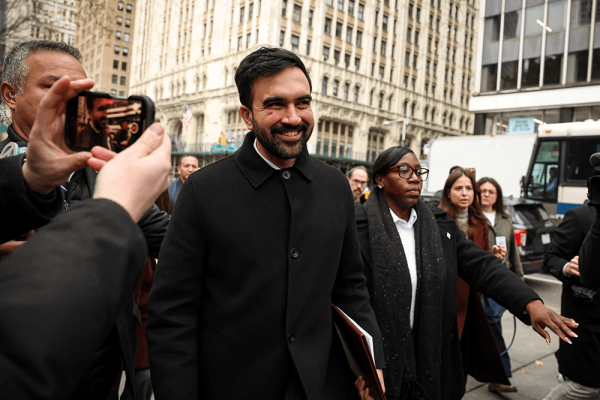When I was in seminary, I was forced to leave a community that I loved. The loss of a community that I served and cared about for almost seven years left me emotionally reeling. Upon leaving the community, I started exploring my relationship with God and Christianity; I searched for resources and books that could speak to the sense of longing and distance that I felt in this season of my life. In my season of spiritual wilderness, my training as a social worker and minister helped give language to my experience. But it was not until reading and engaging Krispin Mayfield’s Attached to God: A Practical Guide to Deeper Spiritual Experience that I recognized the helpful tool that I needed during my own personal season of spiritual nomadism and divine disillusionment was a book like this. Attached to God is an exploration of the different ways people experience connection with God — a topic Mayfield treats with tenderness, both as a clinician and as someone on his own spiritual journey of seeking intimacy with God.
Using theologically diverse Christian figures ranging from Billy Graham to Mister Rogers, Mayfield offers examples of what insecure attachment to God can look or feel like, including feelings of doubt, shame, or distancing. Leaning heavily on attachment theory — a theory that examines relationships and the nature of the bonds between people, especially between caregivers and children, romantic partners, and close platonic relationships — Mayfield provides a relatable guide to assist folks with identifying the deeper questions and beliefs behind some of our spiritual frameworks.
The book has two parts: The first is an exploration of the different insecure attachment styles that Christians can model with God, including anxious attachment (an attachment style that needs constant perceived closeness to God) and shutdown attachment (an attachment style that fears emotional intimacy and thus prioritizes knowledge as a means for divine connection). The second half of the book provides questions, tips, and exercises to shift from these insecure attachment styles to a secure or healthy sense of attachment to God.
Mayfield invites us into this journey by sharing his own experience questioning his relationship with God as a missionary kid. He then invites readers to explore their own attachment style with a quiz and definitions of the different types, along with concrete examples of each attachment style drawn from Christian figures in different traditions and explanations of how each attachment style can manifest within our spiritual life and in public witness. For example, Mayfield states that an anxious attachment spirituality prioritizes behaviors that elicit feelings of closeness to God, so folks with this attachment style may devote themselves excessively to spiritual practices or religious events to “please” God.
Mayfield, who is a licensed professional counselor practicing in Oregon, does a great job of communicating his therapeutic knowledge through accessible psychological research and practical theological applications. He details each of the different attachment styles with care, including therapeutic practices and theological revisioning aids to assist readers in reframing and renegotiating their relationship with God.
The language, tools for reflection, and deeply personal stories of this book are geared toward readers who are actively looking for ways to continue to sustain a relationship with a form of theistic worship. But as someone who works with folks who have experienced severe harm in dogmatic religious communities, I know this approach may not be helpful for everyone; some folks who have experienced religious or spiritual trauma struggle with being able to detangle their abusive religious community from their perceptions of an abusive God. For these folks, it may be difficult to read from Christian figures who led these Christian communities, like Billy Graham or Rick Warren, even if Mayfield only cites them as examples of insecure religious attachment. Furthermore, certain questions on the diagnostic provided in the book — like questions about worship music or certain Bible passages — would be harder for folks who have divested from traditional Christian spiritual ideology and no longer engage the Bible as a way to see God’s design/plan for the world.
In his reflections, Mayfield leans heavily on his own faith practices and experiences within evangelicalism and the book continues a publishing trend that caters to a particular deconstructionist experience, including Searching for Sunday by Rachel Held Evans, Out of Sorts by Sarah Bessey, and Pure by Linda Kay Klein. As someone who grew up outside of the evangelical context, I was able to partially connect with the work, but I couldn’t help but feel like I was encroaching on a conversation that wasn’t quite meant for me.
That said, I do believe that this book is an amazing tool for individuals seeking to reconnect with spirituality and reclaim a relationship with God, especially those coming from an evangelical or charismatic Christian background. This book is also helpful for clinicians whose clients have experienced some religious harm and are seeking to make sense of what their clients’ relationship with God might look like in the aftermath. When I reflect on the early days of my own spiritual recovery journey, I can see how this book would have been a valuable tool to begin to make sense of my own wrestling with Christianity and God. And as someone who now occupies a different space, I appreciate Mayfield’s tenderness and care to hold space for those who are wrestling with the unhealthy relationship to God that certain forms of religiosity cultivated. I encourage you to read and engage Attached to God if you are personally on a spiritual healing journey or are committed to walking alongside those who are recovering from spiritual harm.
Got something to say about what you're reading? We value your feedback!







